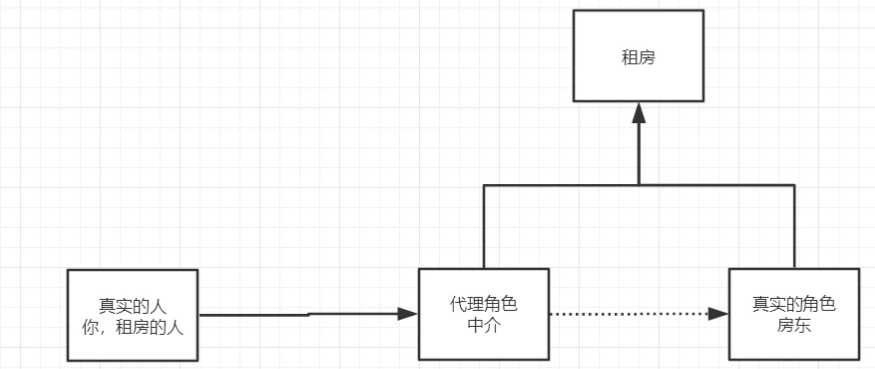标签:实现 http 租赁合同 service 字节 this 角色 asc 模式
为什么要学习代理模式? 因为这就是SpringAOP的底层
代理模式的分类:

角色分析:
接口:
public interface Rent {
public void rent();
}真实角色
public class Host implements Rent {
public void rent() {
System.out.println("包租婆出租屋");
\}
}代理角色
public class Proxy implements Rent {
private Host host;
public Proxy() {
}
public Proxy(Host host) {
this.host = host;
}
public void rent() {
System.out.println("通过代理:");
see();
host.rent();
sign();
fee();
}
public void see(){
System.out.println("中介带你看房");
}
public void sign(){
System.out.println("签租赁合同");
}
public void fee(){
System.out.println("收中介费");
}
}客户
public class Client {
public static void main(String[] args) {
Host host = new Host();
Proxy proxy = new Proxy(host);
proxy.rent();
}
}代理模式的好处:
缺点:
需要了解两个类: Proxy(代理) , InvocationHandler(调用处理程序)
动态代理的使用
public class ProxyInvocationHandler implements InvocationHandler {
//被代理的接口
private Object target;
public void setTarget(Object target) {
this.target = target;
}
//生产得到代理类
public Object getProxy() {
return Proxy.newProxyInstance(this.getClass().getClassLoader(),
target.getClass().getInterfaces(), this);
}
//处理代理实例并返回结果
public Object invoke(Object proxy, Method method, Object[] args) throws Throwable {
log(method.getName());
//动态代理的本质,就是使用反射机制
Object result = method.invoke(target, args);
return null;
}
public void log(String msg){
System.out.println("执行力"+msg+"方法");
}
}public class Client {
public static void main(String[] args) {
UserServiceImpl service = new UserServiceImpl();
ProxyInvocationHandler proxyInvocationHandler = new ProxyInvocationHandler();
proxyInvocationHandler.setTarget(service);
UserService proxy = (UserService) proxyInvocationHandler.getProxy();
proxy.add();
proxy.update();
proxy.query();
proxy.delete();
}
}好处:
标签:实现 http 租赁合同 service 字节 this 角色 asc 模式
原文地址:https://www.cnblogs.com/pinked/p/12198789.html